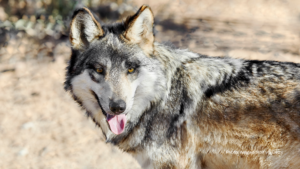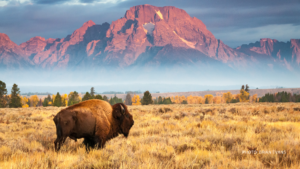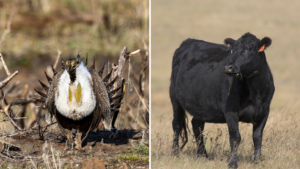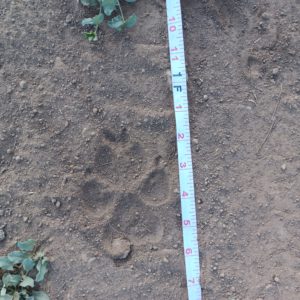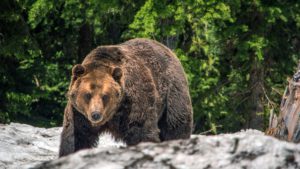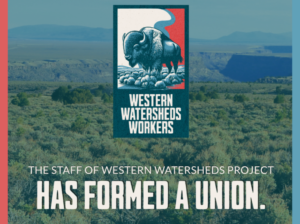For Immediate Release
Contact:
Erik Molvar, Western Watersheds Project, (307) 399-7910
Roger Rosentreter, BLM Botanist, retired, (208) 991-8815
Don Mansfield, Emeritus Professor of Biology, College of Idaho
Scientific report reveals livestock as the key factor in cheatgrass spread
HAILEY, Ida. (February 15, 2024) – A scientific report released today illuminates the causes of cheatgrass spread and compares the effectiveness of various methods to restore invaded plant communities. The report reviews over 500 studies spanning a century of scientific research.
Cheatgrass is a widespread invasive weed occupying millions of acres in the Intermountain West and its invasions fuel large-scale fires that degrade wildlife habitats and wipe out sagebrush communities key to the survival of sage grouse and dozens of other native wildlife species.
“There is a massive and comprehensive body of scientific findings specific to cheatgrass invasions, showing that disturbance from commercial activities, most notably overgrazing by domestic livestock, is the key factor in causing the spread of this invasive and flammable weed,” said Erik Molvar of Western Watersheds Project. “Conversely, in areas where land managers have maintained healthy natural ecosystems, cheatgrass is a negligible component of the plant community and is unable to establish dominance, even after fires.”
Key findings of the report include:
- Cheatgrass requires disturbance of native plant communities to gain a foothold.
- Disturbance from heavy grazing by domestic livestock is an ‘ecological switch’ that is the key trigger of widespread cheatgrass invasions.
- Industrial disturbance from road construction, oil and gas development, mining, and fuelbreak construction can also cause localized cheatgrass irruptions.
- Once soils and vegetation are disturbed cheatgrass seedlings outcompete the seedlings of native grasses for soil nutrients and water.
- Because cheatgrass is an annual that dies in early summer providing highly combustible fuel, cheatgrass infestations fuel unnaturally large range fires.
- Fire itself is not a direct cause of cheatgrass spread, and fires that occur in healthy natural ecosystems result in native bunchgrass communities post-fire, not cheatgrass monocultures.
- Healthy perennial bunchgrasses and undisturbed biological soil crusts provide a natural defense against cheatgrass invasions.
The report documents that cheatgrass continues to expand over recent decades facilitated by land management that prescribes unsustainably heavy levels of domestic livestock grazing.
“The science on cheatgrass is similar to many other weeds,” said Roger Rosentreter, retired state botanist for the Bureau of Land Management. “The more soil disturbance, the more weeds.”
Drought and fires are expected to increase in frequency and extent as a result of the changing climate. Drought can exacerbate the effects of heavy livestock grazing in suppressing or eliminating native perennial bunchgrasses, allowing cheatgrass to expand rapidly during the next wet cycle. When cheatgrass increases in the understory of shrubsteppe ecosystems, it can fuel major fires. But fire itself is not the cause of cheatgrass spread, and measures designed to control the spread of fire can cause disturbance that actually facilitates cheatgrass invasion, according to studies cited in the report.
“Blaming fire for our cheatgrass problems is a red herring,” said Don Mansfield, Emeritus Professor at the College of Idaho. “Building fire breaks is a wonderful way to develop corridors for the spread of weeds. Cheatgrass will be eternally grateful to us for that.”
The report also explains the difficulty of eliminating cheatgrass once it has become established. Some methods, like herbicides and biological agents, have shown limited promise at small scales but have been ineffective when scaled up to the hundreds of thousands of acres of a major cheatgrass infestation. Other methods, like mechanical treatments, burning, or targeted livestock grazing, risk exacerbating cheatgrass infestations. The authors recommend sequential removal of livestock from large areas until native bunchgrasses are adequately re-established, as perhaps the most promising method of re-establishing native vegetation in the wake of major cheatgrass outbreaks.
“This report intends to bring the vast array of scientific findings on cheatgrass causes, consequences, and solutions into one place as a useful and comprehensive reference guide for land managers, conservationists, and user groups,” said Molvar. “In an age of fads and short attention spans, it is critically important to take stock of all that scientists have learned about cheatgrass over the decades to prevent further cheatgrass spread and maximize our effectiveness at restoring infested areas back to healthy natural ecosystems.”

